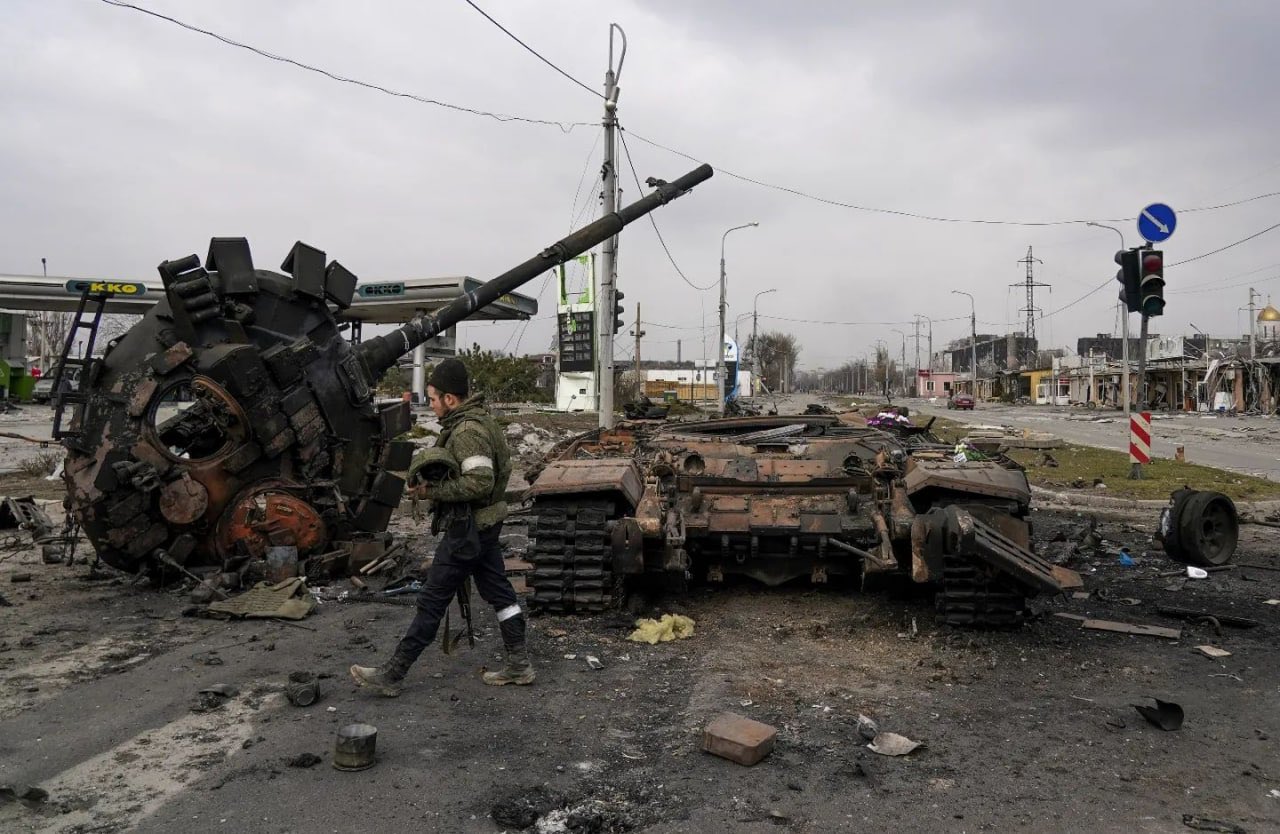Russian forces appear to be attaching makeshift metal cages to the tops of their tanks in Ukraine in a crude effort to protect themselves against Javelin anti-tank missiles.
After Ukraine, Russia ‘Intimidates’ Japan With Massive Military Drills Using Su-35 Jets, Bastion-P Missiles, Orlan UAVs
The cages are supposed to defend against anti-tank weapons that strike the top of the vehicle, where the armor is the thinnest.
Earlier this week, the BBC reported on the defeat of a Russian attack on the Ukrainian town of Voznesensk. Film captured on local security cameras shows a column of tanks and armored vehicles using makeshift cages and sandbags to give added protection.
The cages fail to protect against Ukrainian weapons, but they could also be disadvantageous to Russian tanks because of the added weight and height.
Russia has so far lost at least 270 tanks, according to the open-source weapons tracking site Oryx — which is around 10% of its estimated active force.
One of the main threats to armored vehicles are heat (High Explosive Anti-Tank) weapons, such as the Russian-made but widely employed RPG-7. The warheads of these rocket-propelled grenades are shaped charges — hollow cones of explosive lined with metal. When the explosive detonates it blasts the metal lining into a narrow, high-speed jet that is able to punch through thick steel. An RPG-7 can penetrate 30cm of steel plate.
And RPG-7s are the babies of the bunch. Other, far more powerful shaped-charge anti-tank weapons used by Ukrainian forces include Javelins supplied by America, NLAWS (Next-generation Light Anti-tank Weapons) supplied by Britain, and drone-borne mam-l missiles, supplied by Turkey.

Slat and bar add-on armors are a lighter and cheaper way to counter RPGs, though even if used correctly they are, literally, hit or miss protection. The spacing of the bars or slats is crucial. If a rocket hits a bar it makes little difference, for its warhead will detonate anyway. But if it gets trapped between bars it will probably be damaged in a way that means that the signal from the nose-mounted fuse cannot reach the detonator.
Russia has been fitting slat armor to vehicles since 2016, but the design of the new cages, seemingly improvised from locally available materials, is baffling. They appear to be oriented in a way that protects only against attacks from above.
In principle, that might help against Javelins, which have a “top attack” mode in which they first veer upwards and then dive to punch through a tank’s thin top armor.

But experts note, even if the cage sets off a Javelin’s precursor warhead, the main charge is still more than powerful enough to punch through the top armor and destroy the tank—as the Ukrainian army itself proved in December when it tested one against a vehicle protected by add-on armor replicating the Russian design. As expected, the Javelin destroyed the target easily.
Shoot and scoot
The Javelin missiles have been named so as they take the path of the spears thrown in track and field events to attack the enemy.
These aren’t state-of-the-art missiles, like the shoulder-fired Javelin. This is a Stugna-P, a less sophisticated anti-tank warhead made by Ukraine which destroyed another Russian T-72 battle tank that is out of action.
A small group of soldiers can set up the missile on a tripod and wait for tanks to come into range. Using a remote control panel that looks like a hard camera case, an operator can paint the target with a laser until the missile strikes or allow its own laser guidance to self-direct into the target.

It’s proving quite effective. In three weeks of fighting, Russia has lost its many big cope cages tanks. The emerging evidence of cages failures has opened up a debate about whether tanks might be on their way to joining chariots and mounted cavalry in the boneyard of military history.
With very little training, troops and even volunteers can defeat tanks. The Javelin is a fire-and-forget missile that allows its user to immediately move or take cover after firing. It has a mode to hit a tank where its armor is weakest: on top. Ukraine has been training its reservists, some of whom only recently joined, on these weapons since the war broke out.
The British- and Swedish-designed NLAW, or Next-generation Light Anti-tank Weapon, is also relatively simple to use and is a gift from Britain empowering Ukrainian troops to devastate Russian tanks effectively.
It weighs about as much as a case of beer. Balanced on a shoulder, an operator tracks a target within half a mile for a few seconds and then fires. The missile’s fire-and-forget guidance system takes over.
Compared to the American-made Javelin antitank weapon, which has been hailed by officials at the Pentagon and the White House and sent to Ukraine by the thousands, the NLAW weighs about half as much, costs far less, can be easily discarded, and is optimized for use in the relatively short-range fights Ukrainian soldiers are getting into with the invading Russian forces.
- The author can be reached at rmanojmenon@gmail.com
- Follow EurAsian Times on Google News




